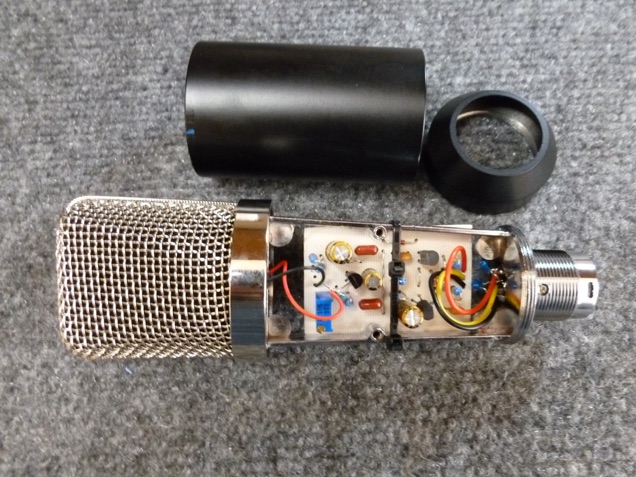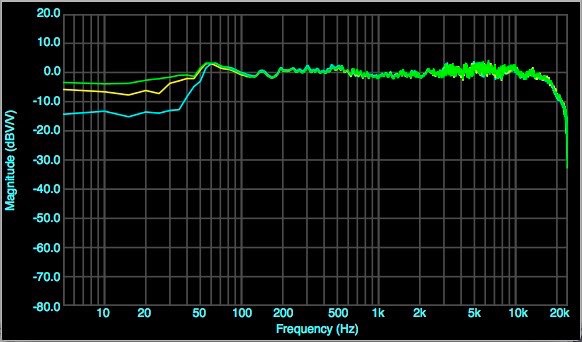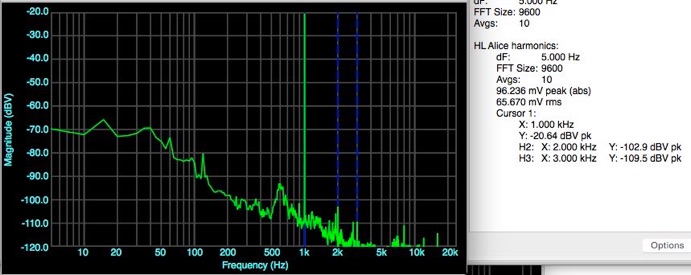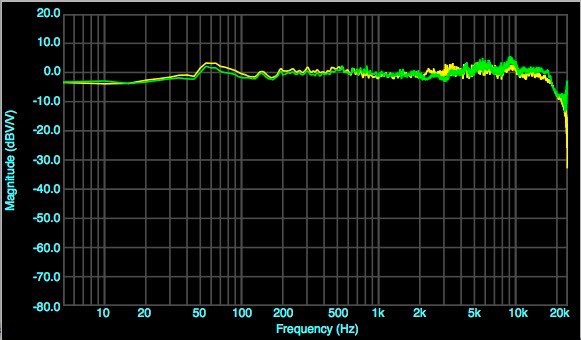Homero’s Alice / TSB2555B Mic

Homero’s “Pimped Alice”
Tuesday, January 5, 2016

Another contributor to the micbuilders forum, Homero Leal, has been experimenting with the Alice mic circuit. He and Jules Ryckebusch have pimped the circuit with adjustable bias for the FET, protection diodes for the output transistors, and a capacitor from output collectors to ground. All of these are theoretical advantages over the simplest basic circuit. His mic is almost a full Schoeps impedance converter but without DC-DC polarization because he used a Transsound TSB2555B electret capsule. It’s built in a Neewer NW-700 body like Alex’s mic.

He made a printed circuit board for the mic. Neat construction.
The circuit is posted in the micbuilders forum file section should you want to build one.
Putting a well designed and tested circuit and a higher quality capsule into this inexpensive mic body makes a nice sounding mic for very little money.
How does it check out? I measured frequency response, noise and distortion with my usual setup which is decidedly NOT to be taken as gospel, but can be compared to other mics I’ve tested.

First frequency response. The blue trace is as Homero built it. A nice, flat response over all, with an extended top end without the usual peak around 10KHz. Bass is down below 60Hz.
The yellow trace is without the foam lining in the headbasket. I expected to see a bit more top end, but the change is in the bass.
The green trace is with 1uF caps added in parallel to the 0.1uF coupling caps between FET and output transistors. Depending on usage, this may be too much extended bass response.

Injecting a 1KHz sine wave in series with the capsule shows harmonic distortion and noise is excellent. At 200mV p/p output, second harmonic is about 83dB down, well under 0.01% and third is over 6dB below that. With capsule disconnected noise is about 12dB lower than shown here at low frequencies, so electronic noise is safely below capsule-related acoustic noise.
Other observations, this TSB2555B has a more open and extended top end than Alex’s example. The pickup pattern is a rather wide cardioid. Off axis sound is not suppressed much. On axis, the sound is smooth and detailed. In the recorded sound test (here), I put Homero’s mic on the left and paired it with a KM-84 on the right. The KM-84 has a similar response without a presence peak. The TSB2555B picks up noticeably more room ambience than the Neumann does. Homero’s mic was out of phase with the KM-84 which I corrected in the DAW.
For well under $100, this “Pimped Alice” comes impressively close to a revered classic mic.
Update: Playing around with the mic, the pattern was actually hypercardioid with a null to the side/rear and a lobe on the rear axis, which suggests the delay was too long. The capsule was mounted inside the Neewer holder with hot glue. I took the capsule out and cut away most of the holder, then stuck the capsule down to the remainder with double sided tape. I also left the foam windscreen out, since it touched the capsule on the sides. The pattern improved to a normal cardioid as Transsound designed it.
The foam lining Neewer uses is OK with the small capsule that comes in their mic, but may cause problems with larger ones. Transsound’s TSB2555B is sensitive to mountings which interfere with sound travel around the capsule, as are most directional mics. It seems to work better with these two changes. If a windscreen is needed, use one that fits over the headbasket.


Frequency response is slightly better, especially above 12KHz. Very extended for an inexpensive capsule. It’s worth paying attention to the capsule’s environment. Anything that impedes or reflects sound is going to be recorded along with the sound you want to capture.

